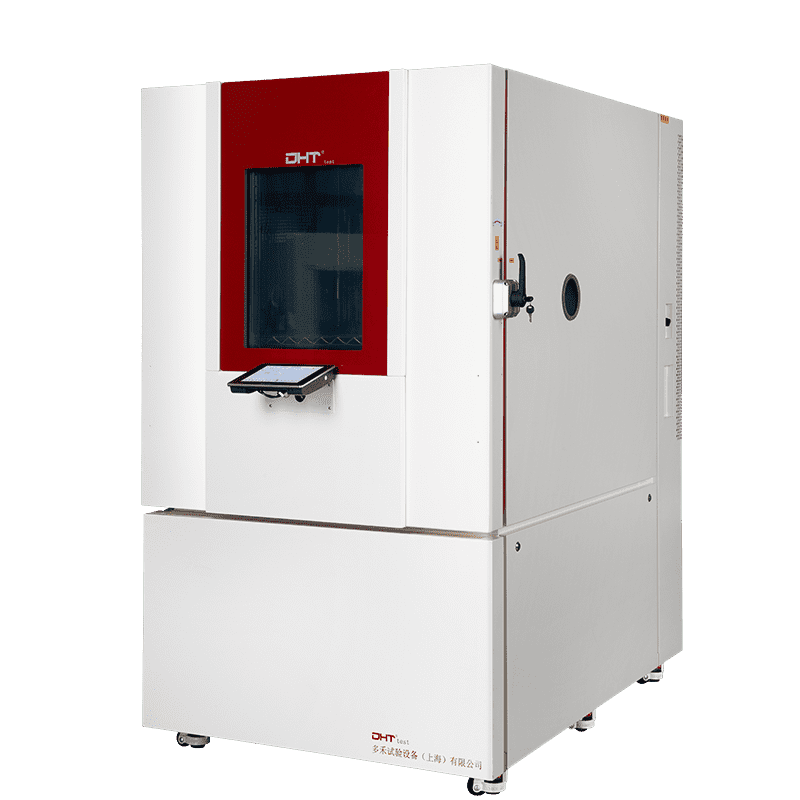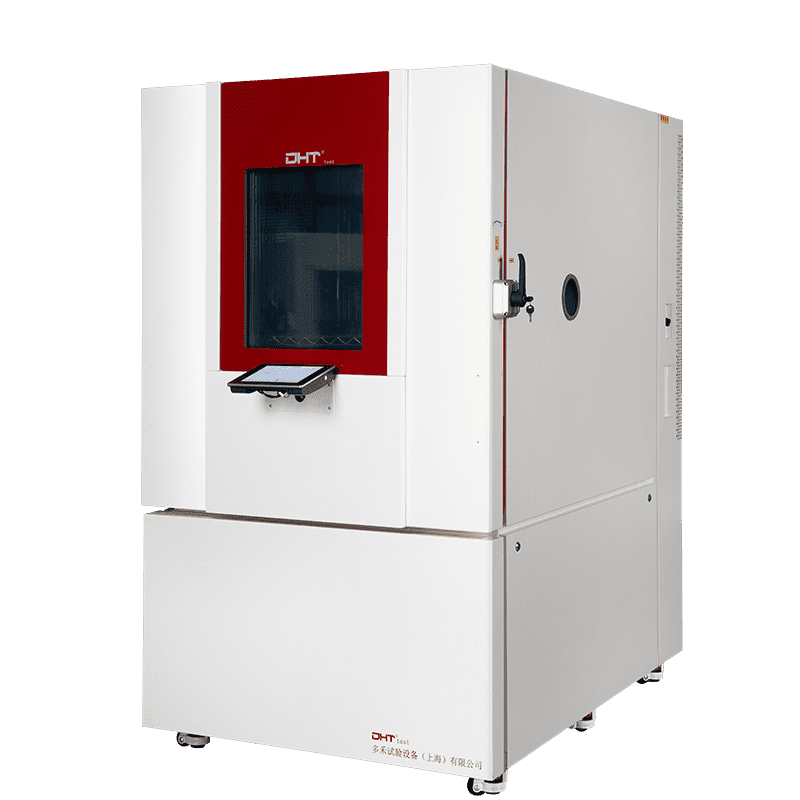Was ist eine Sandstaub-Testkammer?
Working Principles of Sand Dust Test Chambers
-
Airflow System Equipped with built-in blowers and ductwork, the chamber creates a closed-loop airflow that forcibly carries dust particles into the test chamber, simulating the dynamic process of sandblasting in nature. The wind speed is continuously adjustable, typically ranging from 1.5 m/s to 10 m/s, to meet various standard test requirements.
-
Dust Delivery and Recycling System Standardized dry dust materials (such as talcum powder, silicate dust, and fine sand) are continuously circulated and reintroduced during the test. This system ensures uniform dust concentration without accumulation throughout the test duration, maintaining consistency and stability.
-
Temperature and Environmental Control To realistically simulate high-temperature desert conditions, the chamber is equipped with a heating system that can raise the temperature from ambient to above 50°C. Some advanced models also support low-humidity control to enhance adaptability to dry-heat combined environments.
-
Control and Monitoring System Integrated PLC controllers and human-machine interfaces allow precise setting of test duration, wind speed, dust injection intervals, and temperature parameters. Real-time data acquisition and remote monitoring features meet the needs of modern digital laboratory management.
Typical Application Areas of Sand Dust Testing
-
Military and Special Equipment Field combat gear, military communication systems, and missile control components must withstand extreme wind and sand conditions in deserts and highlands. Sand and dust testing comprehensively evaluates the reliability and stability of seals, connectors, and cables under abrasive environments.
-
Automotive Industry Automotive components such as headlights, door locks, sensors, and control modules are exposed outdoors year-round. Using a blowing sand and dust test chamber for IP rating certification effectively assesses dust and sand resistance to prevent malfunctions caused by particle intrusion.
-
Communications and Power Equipment Outdoor-deployed devices like 5G base stations, solar inverters, and power distribution cabinets are prone to overheating and short circuits if dust sealing is inadequate. Sand dust testing helps identify potential design flaws, improving engineering quality and reliability.
-
Smart Home and Outdoor Lighting Outdoor products such as garden lights, security cameras, and exterior speakers also require sand dust testing to verify long-term protection performance, extend service life, and reduce after-sales maintenance costs.
Overview of Mainstream Testing Standards
-
IEC 60529: Defines ingress protection (IP) rating methods, with IP5X and IP6X specifically addressing dust protection.
-
MIL-STD-810H (Method 510.7): U.S. Department of Defense environmental test standard detailing particle size distribution, test duration, dust concentration, and airflow velocity in sand and dust testing.
-
31467.3 und SAE J2464 müssen diese Tests in einem ATEX-zertifizierten explosionsgeschützten Gehäuse durchgeführt werden. 2423.37: Chinese national standard for environmental adaptability testing of industrial products under blowing dust conditions.
-
SAE J575: Automotive lighting system standard specifying dust resistance requirements.
How to Choose a High-Performance Sand Dust Test Chamber?
-
High precision in wind speed and dust concentration control to guarantee repeatable and verifiable test results;
-
Modular structural design for easy sample placement, cleaning, maintenance, and customization flexibility;
-
Compliance with multiple international test standards supporting IP, dust, and sand resistance testing;
-
Strong long-term stable operation capability for continuous, intensive testing;
-
Intelligent control systems with remote operation to simplify workflows and enhance laboratory efficiency.
Conclusion: Sand Dust Testing—A Critical Step for Environmental Adaptability Verification
Häufig gestellte Fragen
Was simuliert eine Sandstaub-Prüfkammer und warum ist sie wichtig?
Eine Sandstaubprüfkammer repliziert natürliche Sandsturmumgebungen, indem sie die Windgeschwindigkeit, Staubkonzentration und Temperatur kontrolliert. Sie hilft Ingenieuren, die Abdichtung, den Schutzgrad und die Zuverlässigkeit eines Produkts unter rauen Außenbedingungen zu bewerten – entscheidend für Branchen wie Automobil, Militär und Elektronik.
Welche Prüfstandards werden für Sand- und Staubprüfungen verwendet?
Wichtige Standards umfassen:
IEC 60529 für IP5X/IP6X Schutz vor Staubeintritt
MIL-STD-810H (Methode 510.7) für militärischen Schutz gegen Sand/Staub
GB/T 2423.37 für allgemeine Tests von Industrieprodukten
SAE J575 für Beleuchtungssysteme in der Automobilindustrie
Diese Standards gewährleisten wissenschaftlich gültige und weltweit anerkannte Ergebnisse.
Welche Merkmale sollte ich beachten, wenn ich eine Sandstaubprüfkammer auswähle?
Achten Sie auf:
Präzise Steuerung der Windgeschwindigkeit und Staubkonzentration
Modulares Design für einfache Wartung und Anpassung
Einhaltung internationaler Standards (IP, MIL, IEC, etc.)
Intelligente Steuersysteme mit Fernüberwachung
Nachgewiesene Stabilität für langfristige, intensive Tests


